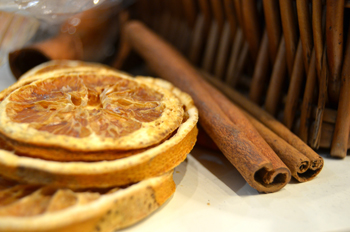 |
The minty-fresh smell after brushing your teeth, the buttery flavour on your popcorn and your vanilla-scented candles - these are mostly flavour and fragrance compounds produced synthetically in a laboratory and the result of many decades of research.
This research, in the end, is what will be important to reproduce these fragrances synthetically for use in the food and cosmetic industries.
Prof Martie Smit, Academic Head of the Department of Microbial, Biochemical and Food Biotechnology at the UFS, and her colleague Dr Dirk Opperman, currently have a team of postgraduate students working on the production of various flavour and fragrance compounds from cheap and abundantly available natural raw materials.
Prof Smit explains that most of the flavours and fragrances that we smell every day, originally come from natural compounds produced mainly by plants.
“However, because these compounds are often produced in very low concentrations by plants, many of these compounds are today replaced with synthetically-manufactured versions. In recent times, there is an increasing negative view among consumers of such synthetic flavour and fragrance compounds.”
On the other hand, aroma chemicals produced by biotechnological methods, are defined as natural according to European Union and Food and Drug Administration (USA) legal definitions, provided that the raw materials used are of natural origin. Additionally, the environmental impact and carbon footprint associated with biotech-produced aroma chemicals are often also smaller than those associated with synthetically-produced compounds or those extracted by traditional methods from agricultural sources.
During the last four years, the team investigated processes for rose fragrance, vanilla flavour, mint and spearmint flavours, as well as butter flavour. They are greatly encouraged by the fact that one of these processes is currently being commercialised by a small South African natural aroma chemicals company. Their research is funded by the Department of Science and Technology and the National Research Foundation through the South African Biocatalysis Initiative, the DST-NRF Centre of Excellence in Catalysis and the Technology Innovation Agency, while the UFS has also made a significant investment in this research.